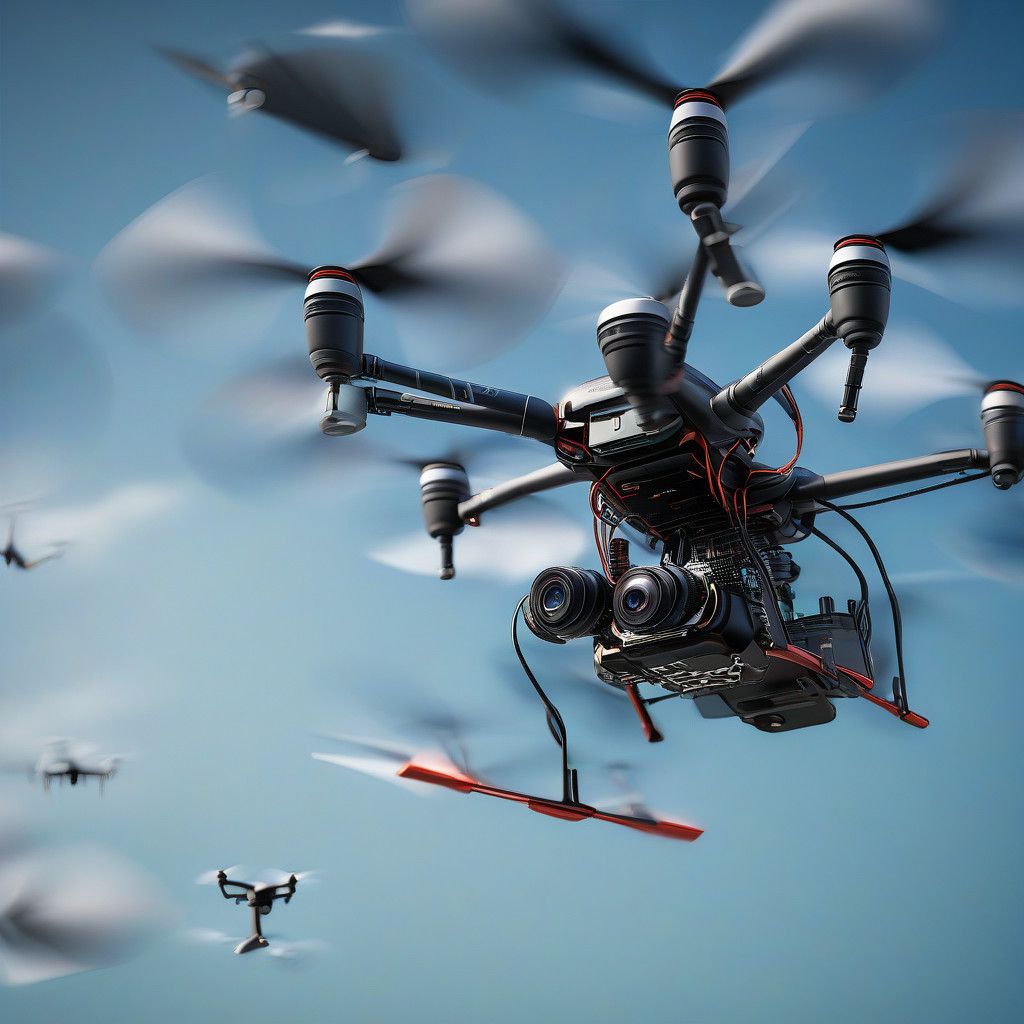The Federal Communications Commission (FCC) has recently unveiled new regulations aimed at enhancing the operational framework for drone operations within the 5GHz spectrum band, specifically between 5030-5091 MHz. This initiative responds to the anticipated tripling of uncrewed aircraft systems (UAS) over the next decade, signaling a significant shift in how industries, including emergency services, agriculture, and infrastructure management, utilize drone technology.
The new regulations allow drone operators to gain direct frequency assignments for non-networked operations, thereby fortifying the reliability of communications critical for safe integration into the United States National Airspace System. This step is crucial as the UAS market is projected to grow dramatically, potentially reaching multi-billion-dollar valuations in the coming years.
Understanding the Importance of 5GHz Spectrum for Drones
The adoption of the 5GHz frequency band is essential for ensuring that drones can operate efficiently without interference from other wireless devices. The frequency allocations are designed to provide more substantial support for real-time communications required by UAS, which perform various tasks ranging from package delivery to disaster management. Under these new rules, operators can access a more structured system that enhances operational safety through improved spectrum management.
To implement these changes effectively, dynamic frequency management systems will be employed. These systems will facilitate efficient spectrum access by awarding temporary frequency assignments to drone operators, ultimately enabling enhanced operational safety and communication reliability during flights.
Immediate Solutions for Drone Operators
In addition to setting forth long-term regulatory measures, the FCC has introduced an interim access mechanism. This provision allows drone operators to request frequency use from the Federal Aviation Administration (FAA) even before the dynamic systems are fully operational. It ensures that operators can seamlessly transition into the new framework without interruptions to their service. Once FAA approval is granted, operators will be required to register online with the FCC, streamlining the process even further.
Chairwoman Jessica Rosenworcel has emphasized the significance of this regulatory update, highlighting that UAS are already instrumental in various critical roles—such as wildfire response and logistics support. By establishing a clear framework for the integration of drone technology into everyday operations, the FCC aims to foster greater innovation while concurrently enhancing public safety and operational efficiency.
Long-term Implications for Industries
The implications of these new drone regulations are vast and multifaceted, impacting various sectors. For instance, in agriculture, UAS can offer real-time monitoring of crop health, leading to more effective resource management. In emergency services, drones can improve response times, allowing for rapid assessment of disaster areas.
Moreover, infrastructure inspections, particularly for utilities and transport networks, can leverage drones to gather data without putting personnel at risk. This efficiency translates to significant cost savings and improved reliability in maintaining critical services and infrastructure.
Promoting Innovation While Ensuring Safety
As drone operations become more prevalent, so does the responsibility to ensure safety and security for all aviation stakeholders. The new FCC regulations mark a critical step in balancing the need for innovation with the essential requirements for a safe and secure airspace. With a projected tripling of UAS operations over the next decade, the framework established by the FCC will be inevitable for the sustainable growth of this rapidly expanding technology sector.
In conclusion, the FCC’s initiative to regulate drone operations within the 5GHz spectrum represents a vital advancement in facilitating the safe integration of UAS into mainstream applications. By providing a structured regulatory environment, the FCC not only encourages innovation but also ensures that safety remains a top priority in the realms of transportation and communication.












